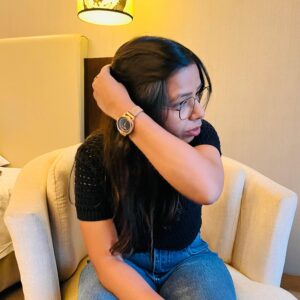Explore top clothing store job openings and fashion designer career paths in the U.S. Learn where to apply, required qualifications, and how E-E-A-T principles guide successful job searches in 2025.
Explore top clothing store job openings and fashion designer career paths in the U.S. Learn where to apply, required qualifications, and how E-E-A-T principles guide successful job searches in 2025.
The fashion industry is one of the most dynamic and fast-evolving employment sectors in the United States. From bustling retail environments to prestigious design studios, the world of fashion offers diverse career paths for both seasoned professionals and newcomers alike. Whether you’re searching for “clothing store vacancies,” “fashion designer jobs,” or “fashion retail jobs near me,” this guide provides expert insights.
Contents
The U.S. fashion industry contributes over $400 billion annually to the economy and supports millions of jobs across retail, manufacturing, marketing, e-commerce, and design sectors. As online and offline shopping merge, clothing brands, boutiques, and department stores are ramping up hiring for roles ranging from retail associates to visual merchandisers and digital fashion marketers.
Top hiring trends in 2025 include:
When searching for clothing store jobs, your location and job preferences will influence your options. Popular retail chains like Zara, Nordstrom, Target, Macy’s, and Urban Outfitters are frequently hiring for roles such as:
Tips for finding vacancies:
Let’s break down the most common positions you’ll find in retail fashion:
Fashion hubs and metro cities have the highest concentration of job openings. Based on recent data, these are the best U.S. cities for clothing store jobs:
Becoming a fashion designer is a dream career for many, and the U.S. offers a wide range of creative roles, both freelance and in-house. The rise of digital fashion and sustainable clothing lines has opened the doors to new types of employment that didn’t exist even five years ago.
Common roles include:
Top American brands, fashion houses, and e-commerce startups offer regular employment for fashion designers. Some key employers and sectors include:
Best platforms to find fashion designer jobs:
While a degree opens doors, many fashion professionals break into the industry through experience, networking, and skill-building. Here’s how:
The gig economy has transformed fashion employment. Now more than ever, freelancers are in high demand. Each path has pros and cons:
| Type | Pros | Cons |
|---|---|---|
| Freelance | Flexibility, project variety, work remotely | No benefits, inconsistent income |
| Full-Time | Job security, benefits, consistent income | Less creative freedom, fixed schedule |
Here’s how companies and job seekers can both apply E-E-A-T:
The rise of fast fashion has created millions of jobs globally, but it has also raised questions about sustainability and ethics. As consumers become more conscious, retailers must adjust hiring and production standards:
Clothing store vacancies and fashion designer jobs are abundant in 2025—but competition is fierce. By aligning your resume, portfolio, and digital presence with E-E-A-T standards, you’ll stand out to employers in a fashion landscape increasingly driven by trust, creativity, and innovation.
Whether you’re walking into a local boutique for a sales role or sending your portfolio to a luxury fashion house, remember: fashion is not just about what you wear—it’s about how you present your experience and talent to the world.

Thank you for subscribing to the newsletter.
Oops. Something went wrong. Please try again later.
Discover how to build the perfect clothing color palette using expert color theory, wardrobe planning tools, and palette generators. Includes a color analysis wheel, matching calculators, and 20+ pro FAQs.
Explore the top eco-friendly clothing brands and groundbreaking sustainable fashion innovations in 2025. Discover how ethical, environmentally conscious fashion is transforming your wardrobe.
Explore the chic street style trends redefining fashion in 2025. From effortless layering to designer-meets-vintage, get expert insights on the hottest looks and how to wear them.
Discover the best chic looks for men in 2025. From relaxed tailoring to elevated streetwear, explore the latest menswear trends and master the art of modern sophistication.